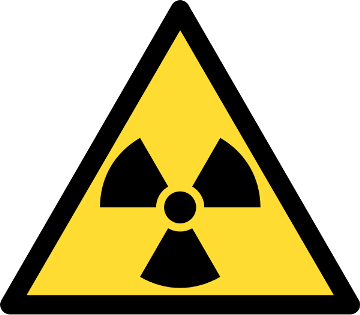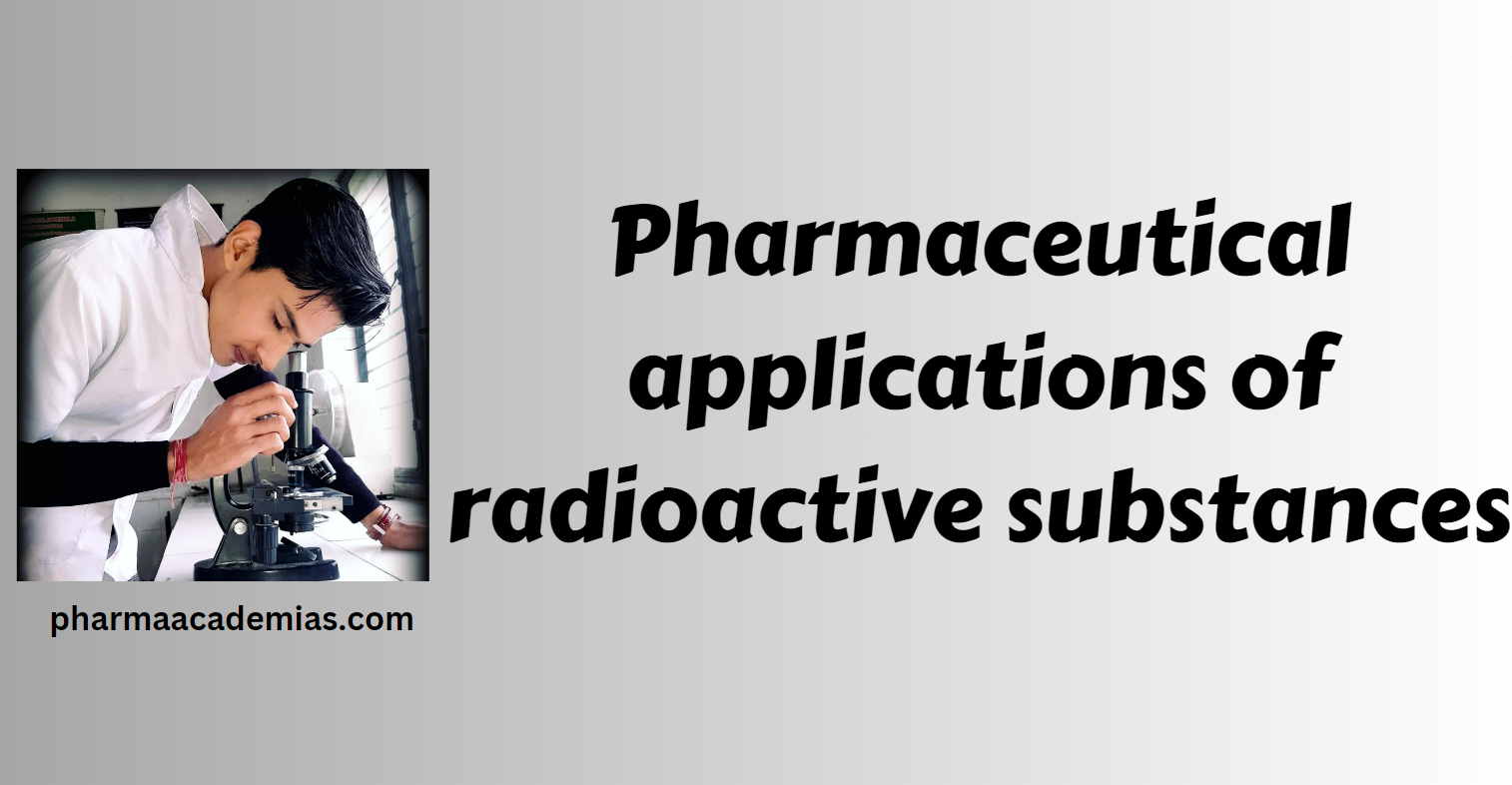Radioactive substances
Radioactive substances have played a significant role in modern medicine and pharmaceutical sciences. The controlled use of radioactive materials in diagnostics, therapy, and research has transformed the healthcare industry. These substances are primarily used in nuclear medicine for imaging, treatment of various diseases, and as tracers in pharmacokinetic and pharmacodynamic studies. This document explores the diverse pharmaceutical applications of radioactive substances, their mechanisms of action, benefits, and safety concerns.

Nuclear Medicine and Radiopharmaceuticals
Radiopharmaceuticals are pharmaceutical compounds that contain radioactive isotopes. These compounds are used in both diagnostic and therapeutic applications. Nuclear medicine, a specialized branch of medical imaging, relies on radiopharmaceuticals to visualize physiological functions within the body.
1. Diagnostic Applications
a) Positron Emission Tomography (PET)
PET imaging is a non-invasive diagnostic technique that uses positron-emitting radioisotopes. The most commonly used radiopharmaceutical in PET scans is Fluorodeoxyglucose (18F-FDG). This compound mimics glucose and is taken up by metabolically active tissues, making it useful for:
- Cancer detection and staging
- Neurological disorders (e.g., Alzheimer’s disease, epilepsy)
- Cardiac imaging (myocardial viability assessment)
b) Single-Photon Emission Computed Tomography (SPECT)
SPECT imaging uses gamma-emitting radioisotopes such as Technetium-99m (99mTc) and Iodine-123 (123I) to provide functional information about organs and tissues. Common applications include:
- Brain imaging for epilepsy, stroke, and dementia
- Bone scans for detecting metastases or fractures
- Myocardial perfusion imaging to assess coronary artery disease
c) Radioactive Tracers in Pharmacokinetics
Radioactive isotopes are used in drug development to study the absorption, distribution, metabolism, and excretion (ADME) of pharmaceutical compounds. Carbon-14 (14C) and Tritium (3H) labeled drugs help researchers determine:
- Bioavailability and half-life of drugs
- Drug-drug interactions
- Metabolic pathways and enzyme activity
2. Therapeutic Applications
a) Cancer Treatment (Radiotherapy)
Several radioactive substances are used in oncology for treating various cancers. These radiopharmaceuticals either deliver targeted radiation directly to cancer cells or enhance external radiotherapy.
- Iodine-131 (131I): Used for treating thyroid cancer and hyperthyroidism by selectively destroying thyroid tissue.
- Lutetium-177 (177Lu): Targets neuroendocrine tumors and prostate cancer with peptide receptor radionuclide therapy (PRRT).
- Yttrium-90 (90Y): Used in selective internal radiation therapy (SIRT) for liver tumors.
b) Bone Pain Palliation
Patients with bone metastases from cancers such as prostate or breast cancer often experience severe pain. Strontium-89 (89Sr) and Samarium-153 (153Sm) are used as radiopharmaceuticals that localize to bone lesions and provide pain relief by delivering localized radiation.
c) Radioimmunotherapy (RIT)
RIT combines monoclonal antibodies with radioactive isotopes to selectively target and destroy cancer cells. Ibritumomab tiuxetan (Zevalin), labeled with Yttrium-90 (90Y) or Iodine-131 (131I), is used in treating non-Hodgkin’s lymphoma.
d) Targeted Alpha Therapy (TAT)
TAT utilizes alpha-emitting radionuclides, which provide high-energy radiation with minimal penetration, reducing damage to surrounding tissues. Actinium-225 (225Ac) and Radium-223 (223Ra) are used for treating metastatic prostate cancer and bone metastases.
3. Sterilization of Pharmaceuticals
Radioactive isotopes are also used for sterilization of pharmaceutical products, medical devices, and packaging materials. Gamma radiation from Cobalt-60 (60Co) is widely employed for:
- Eliminating microbial contamination in drug formulations
- Prolonging the shelf life of pharmaceutical products
- Ensuring sterility in surgical instruments and syringes
4. Research and Development
Radioactive isotopes play a crucial role in pharmaceutical research by enabling:
- Radiolabeling of biomolecules: Used to track drug interactions with biological systems.
- Binding assays: Used to determine receptor-ligand interactions.
- Enzyme kinetics studies: Utilizes radiolabeled substrates to assess enzyme activity in metabolic pathways.
Safety and Regulatory Aspects
The use of radioactive substances in pharmaceuticals is strictly regulated by international bodies such as the International Atomic Energy Agency (IAEA) and national agencies like the Food and Drug Administration (FDA) and European Medicines Agency (EMA). Key safety measures include:
- Radiation shielding: Protective barriers and lead containers minimize exposure to healthcare professionals and patients.
- Dosimetry monitoring: Regular assessment of radiation doses received by personnel handling radiopharmaceuticals.
- Proper disposal of radioactive waste: Ensuring safe and environmentally friendly disposal of used radioactive materials.
Advantages of Radioactive Substances in Pharmaceuticals
- High specificity: Radiopharmaceuticals target specific organs or cells, minimizing systemic effects.
- Early disease detection: Enables identification of diseases at an early stage, improving treatment outcomes.
- Minimally invasive: Nuclear imaging provides valuable diagnostic information without the need for surgical procedures.
- Personalized medicine: Tailored treatment approaches based on patient-specific radiopharmaceutical uptake.
Challenges and Future Perspectives
While radioactive substances have revolutionized pharmaceutical sciences, some challenges remain:
- Short half-life of radioisotopes: Many radiopharmaceuticals require on-site production due to their rapid decay.
- High production and operational costs: Setting up nuclear medicine facilities is expensive.
- Radiation exposure concerns: Despite safety measures, prolonged exposure can pose health risks.
Future Directions
- Development of novel radiopharmaceuticals: Newer isotopes with improved stability and specificity are being explored.
- Theranostics: Combining diagnostic and therapeutic capabilities within a single radiopharmaceutical compound.
- Advancements in PET/SPECT imaging: Improving resolution and sensitivity for more accurate disease detection.
Conclusion
Radioactive substances have become indispensable in modern pharmaceuticals, providing powerful tools for diagnostics, therapy, and research. The continued advancement of nuclear medicine and radiopharmaceuticals promises even greater precision in disease detection and treatment. With ongoing research and technological innovations, radioactive substances will continue to shape the future of healthcare and personalized medicine.

